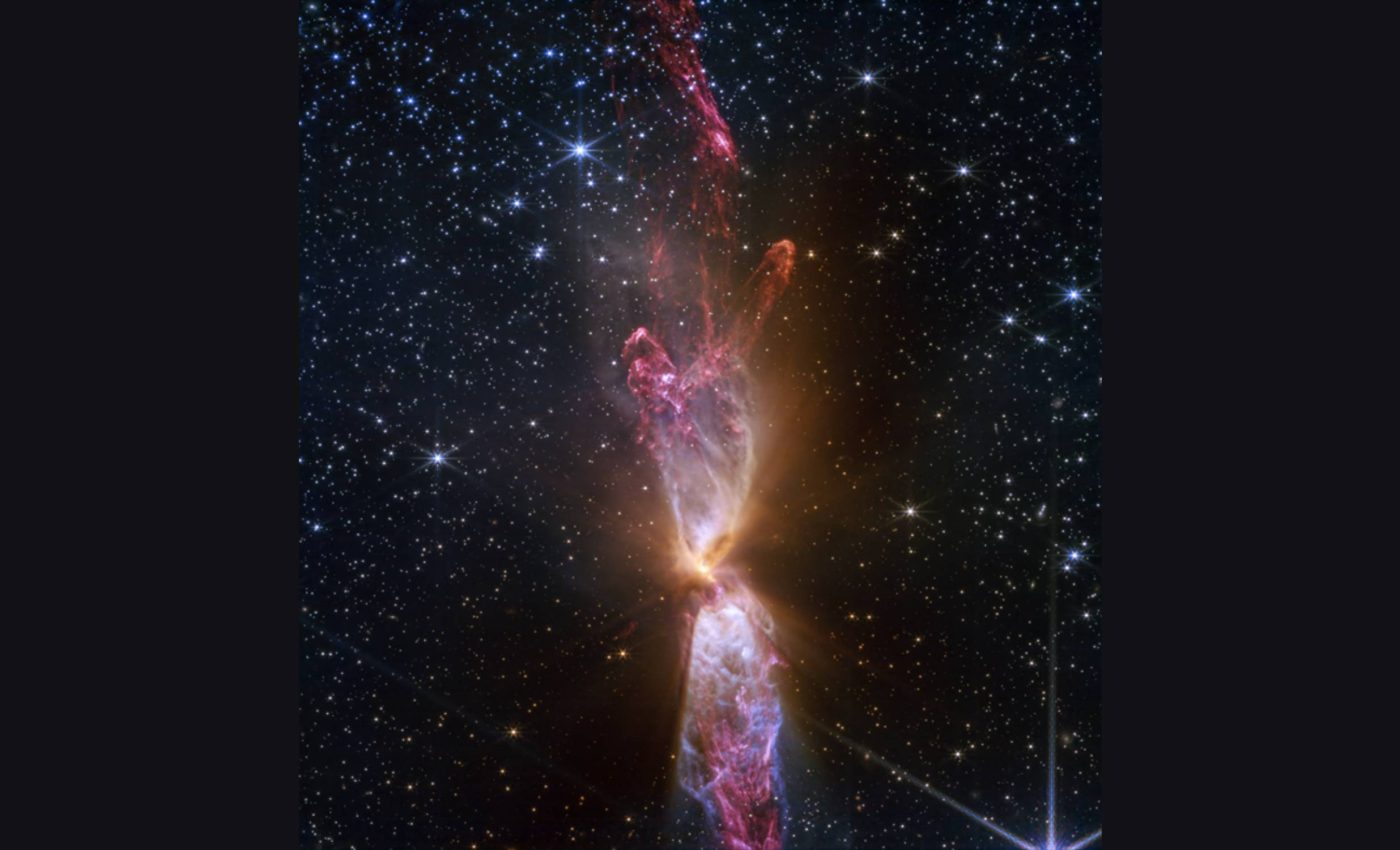
Webb reveals the fiery birth of twin stars in stunning detail
Space is filled with breathtaking sights and hidden processes that shape stars and planets. One of these fascinating places is Lynds 483 (L483), a massive cloud of gas and dust where two young stars are forming.
The twin stars are growing, constantly changing, and shaping their surroundings. NASA’s James Webb Space Telescope has captured an incredibly detailed image of their stellar nursery, giving us a rare chance to witness its evolution.
For thousands of years, the young stars have been throwing out streams of material. These jets collide, spread, and form glowing patterns in space.
What looks like twin flames in the image are actually energetic bursts from the forming stars, creating a scene that shifts and transforms over time.
Intense ejections of gas and dust
Over time, the young stars have periodically expelled gas and dust into space. Some ejections emerge as tight, fast jets, while others spread more slowly.
When the young stars throw out gas and dust, the new bursts crash into older ones that were already there. Since some areas are thicker and some are thinner, the material spreads in different ways, creating unique patterns in space.
These collisions also cause chemical reactions. The energy from the crashes makes atoms and molecules mix and change.
This leads to the formation of new substances like carbon monoxide, methanol, and other organic molecules. These chemicals could later help in the formation of planets and other space objects.
After approximately a million years, the stars will complete their formation. The intense ejections will stop, and the luminous gas and dust structures will fade, leaving behind a much clearer scene.
Thick dust hides the twin stars
At the heart of the image, a thin, vertical cloud forms an hourglass-like structure. The stars responsible for this dramatic display remain shrouded in an opaque disk of cold gas and dust.
Surrounding this disk, where the dust is thinner, the stars’ light escapes, illuminating the surrounding material in brilliant shades of orange, blue, and purple.
The contrast between illuminated and shadowed areas is striking. Some regions appear empty, but they actually contain dense clouds that block most of the starlight.
In these areas, Webb’s sensitive near-infrared camera has detected distant stars as faint, orange pinpoints shining through the thick dust. Where the dust is less obstructive, stars appear in bright white and shades of blue.
Stellar jets and star evolution
The stars’ ejections have created complex and sometimes twisted structures. Toward the top right of the image, a prominent orange arc marks a shock front, where the expelled material has encountered denser gas, slowing its movement.
Just below this arc, orange and pink regions intertwine, forming a tangled pattern that astronomers are eager to study further.
The lower section of the image appears denser, with thick gas and dust. Tiny purple pillars emerge from this region, pointing toward the central stars. These pillars have resisted the force of stellar winds because their material is dense enough to remain intact.
Due to the sheer size of L483, the image only captures part of the lower section, with the upper regions fully visible.
The fate of the twin stars
Astronomers continue to piece together the history of these stellar ejections. By refining their models, they aim to explain the patterns of symmetry and asymmetry observed in the clouds.
Researchers will also determine how much material the stars have expelled, identify the molecules formed through these collisions, and measure the density of different regions.
In the distant future, these twin stars may each reach a mass similar to our Sun. Their powerful outflows will have dispersed the surrounding material, leaving behind a small disk of gas and dust. This remnant may eventually give rise to planets, shaping the next chapter of this celestial story.
Honoring Beverly T. Lynds
L483 bears the name of American astronomer Beverly T. Lynds, whose meticulous work in the early 1960s mapped dense dust clouds where stars form.
Her extensive catalogs of dark and bright nebulae provided essential resources for astronomers long before digital imaging and online databases became available.
Such contributions continue to guide modern research, enabling discoveries like the stunning imagery captured by the James Webb Space Telescope.
Image Credit: NASA, ESA, CSA, STScI
—–
Like what you read? Subscribe to our newsletter for engaging articles, exclusive content, and the latest updates.
Check us out on EarthSnap, a free app brought to you by Eric Ralls and Earth.com.
—–













